Chapter 10 Critical Thinking and Reading第10章批判性思维与阅读
- 格式:ppt
- 大小:84.50 KB
- 文档页数:15
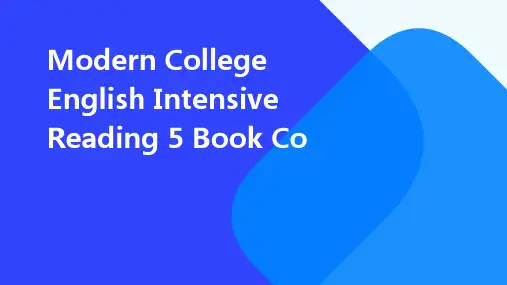
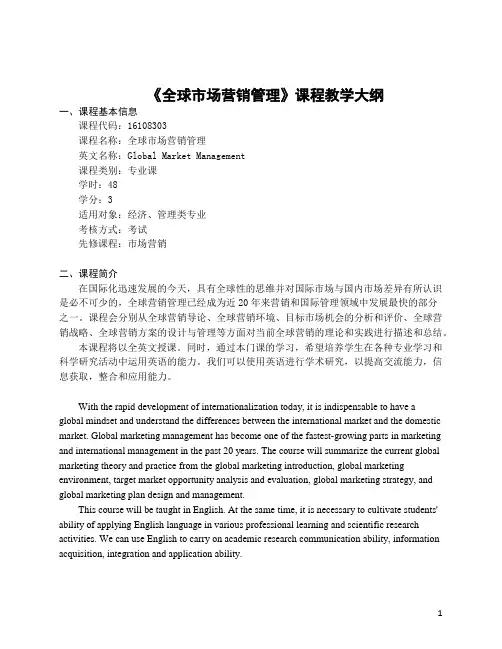
《全球市场营销管理》课程教学大纲一、课程基本信息课程代码:16108303课程名称:全球市场营销管理英文名称:Global Market Management课程类别:专业课学时:48学分:3适用对象:经济、管理类专业考核方式:考试先修课程:市场营销二、课程简介在国际化迅速发展的今天,具有全球性的思维并对国际市场与国内市场差异有所认识是必不可少的,全球营销管理已经成为近20年来营销和国际管理领域中发展最快的部分之一。
课程会分别从全球营销导论、全球营销环境、目标市场机会的分析和评价、全球营销战略、全球营销方案的设计与管理等方面对当前全球营销的理论和实践进行描述和总结。
本课程将以全英文授课。
同时,通过本门课的学习,希望培养学生在各种专业学习和科学研究活动中运用英语的能力。
我们可以使用英语进行学术研究,以提高交流能力,信息获取,整合和应用能力。
With the rapid development of internationalization today, it is indispensable to have aglobal mindset and understand the differences between the international market and the domestic market. Global marketing management has become one of the fastest-growing parts in marketing and international management in the past 20 years. The course will summarize the current global marketing theory and practice from the global marketing introduction, global marketing environment, target market opportunity analysis and evaluation, global marketing strategy, and global marketing plan design and management.This course will be taught in English. At the same time, it is necessary to cultivate students' ability of applying English language in various professional learning and scientific research activities. We can use English to carry on academic research communication ability, information acquisition, integration and application ability.三、课程性质与教学目的本课程是一门全英课程,是专门针对金融学(“2+2”实验班)本科学生开设的一门专业必修课。
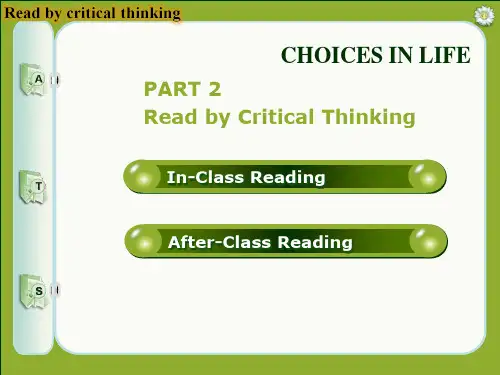

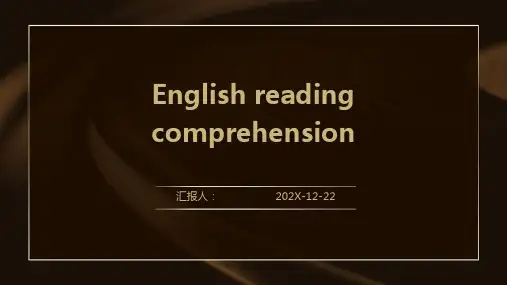
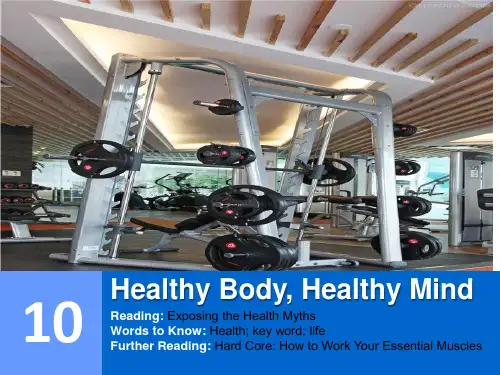
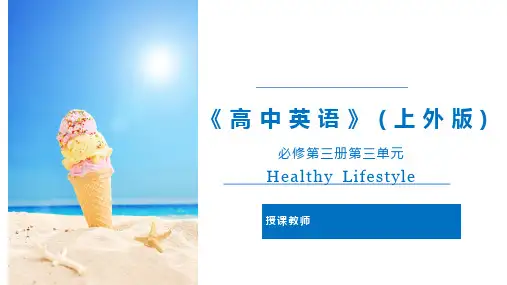
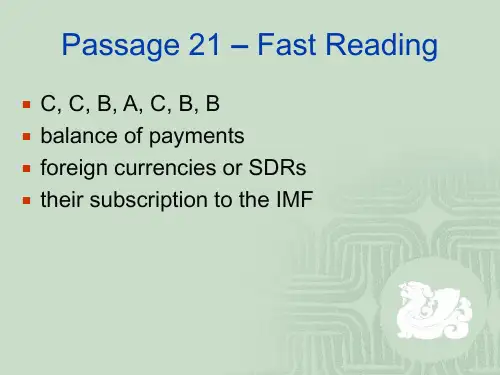
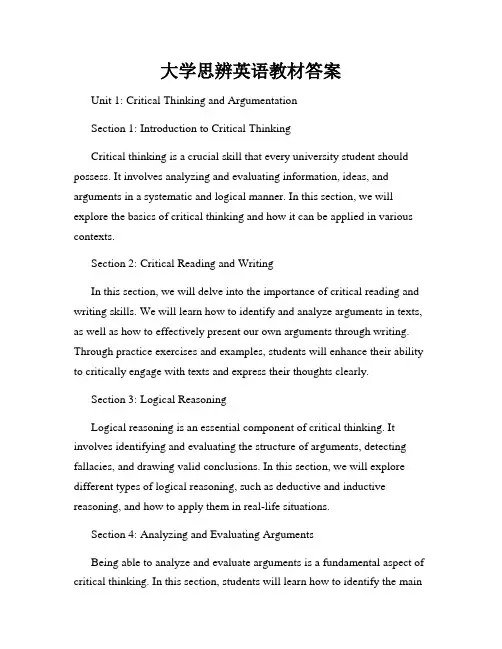
大学思辨英语教材答案Unit 1: Critical Thinking and ArgumentationSection 1: Introduction to Critical ThinkingCritical thinking is a crucial skill that every university student should possess. It involves analyzing and evaluating information, ideas, and arguments in a systematic and logical manner. In this section, we will explore the basics of critical thinking and how it can be applied in various contexts.Section 2: Critical Reading and WritingIn this section, we will delve into the importance of critical reading and writing skills. We will learn how to identify and analyze arguments in texts, as well as how to effectively present our own arguments through writing. Through practice exercises and examples, students will enhance their ability to critically engage with texts and express their thoughts clearly.Section 3: Logical ReasoningLogical reasoning is an essential component of critical thinking. It involves identifying and evaluating the structure of arguments, detecting fallacies, and drawing valid conclusions. In this section, we will explore different types of logical reasoning, such as deductive and inductive reasoning, and how to apply them in real-life situations.Section 4: Analyzing and Evaluating ArgumentsBeing able to analyze and evaluate arguments is a fundamental aspect of critical thinking. In this section, students will learn how to identify the mainclaims, supporting evidence, and underlying assumptions in arguments. They will also develop skills in assessing the credibility and relevance of sources, as well as identifying bias and logical flaws.Unit 2: Persuasive CommunicationSection 1: Introduction to PersuasionEffective persuasion involves the skillful use of language and rhetorical techniques to influence others' opinions or actions. In this section, students will learn about the principles of persuasive communication, such as ethos, pathos, and logos, and how to construct persuasive arguments.Section 2: Understanding AudienceTo effectively persuade others, it is important to understand the needs, values, and beliefs of the target audience. In this section, students will learn how to analyze their audience and tailor their arguments and language accordingly. They will also develop strategies for addressing counterarguments and objections.Section 3: Oral PersuasionOral persuasion plays a significant role in various contexts, such as public speaking and debates. In this section, students will learn how to deliver persuasive speeches, structure arguments effectively, and use rhetorical devices to engage and convince their audience. They will also develop critical listening skills to evaluate and respond to others' persuasive presentations.Section 4: Written PersuasionWritten persuasion is another important aspect of persuasive communication. In this section, students will learn how to craft persuasive essays and opinion pieces. They will explore different organizational patterns and persuasive techniques, such as using evidence and examples, to support their claims. Additionally, students will develop skills in editing and revising their written work for clarity and coherence.Unit 3: Critical Thinking in Everyday LifeSection 1: Critical Thinking in Decision MakingCritical thinking is essential in making informed decisions in our daily lives. In this section, students will learn how to apply critical thinking skills to various decision-making scenarios, such as choosing a major, evaluating job offers, or making ethical choices. They will explore different decision-making models and strategies to enhance their critical thinking ability.Section 2: Media LiteracyIn the era of information overload, media literacy is crucial for effectively navigating and evaluating media messages. In this section, students will learn how to critically assess media content, identify bias and propaganda techniques, and differentiate between reliable and unreliable sources. They will also explore the ethical implications of media consumption and production.Section 3: Problem SolvingCritical thinking is closely linked to problem-solving skills. In this section, students will learn different problem-solving techniques, such as brainstorming, analyzing alternatives, and evaluating potential solutions.They will also develop skills in collaborative problem-solving and decision-making, recognizing the importance of diverse perspectives.Section 4: Ethical ReasoningEthical reasoning requires critical thinking skills to evaluate moral issues and make ethical decisions. In this section, students will explore ethical theories and frameworks, such as utilitarianism and deontology, and apply them to real-life ethical dilemmas. They will develop their ability to critically analyze the consequences and ethical implications of different actions.ConclusionThe university-level critical thinking and argumentation course provides students with the necessary skills to think critically, analyze arguments, and effectively communicate their ideas. By mastering these skills, students will be equipped to succeed not only academically but also in their personal and professional lives.。
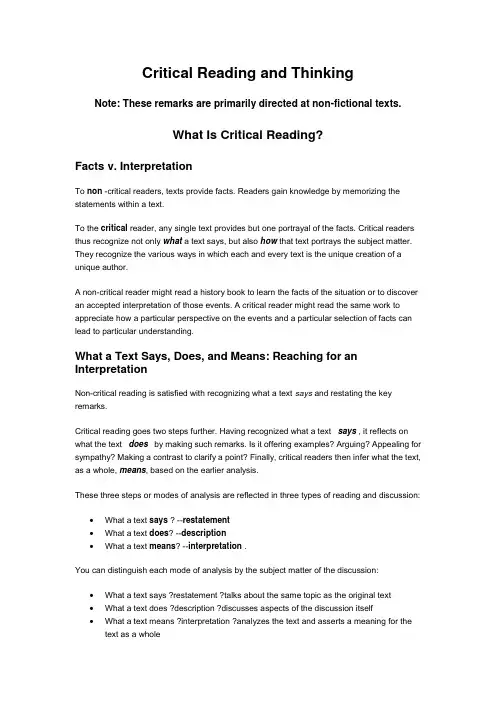
Critical Reading and Thinking Note: These remarks are primarily directed at non-fictional texts.What Is Critical Reading?Facts v. InterpretationTo non -critical readers, texts provide facts. Readers gain knowledge by memorizing the statements within a text.To the critical reader, any single text provides but one portrayal of the facts. Critical readers thus recognize not only what a text says, but also how that text portrays the subject matter. They recognize the various ways in which each and every text is the unique creation of a unique author.A non-critical reader might read a history book to learn the facts of the situation or to discover an accepted interpretation of those events. A critical reader might read the same work to appreciate how a particular perspective on the events and a particular selection of facts can lead to particular understanding.What a Text Says, Does, and Means: Reaching for an InterpretationNon-critical reading is satisfied with recognizing what a text says and restating the key remarks.Critical reading goes two steps further. Having recognized what a text says , it reflects on what the text does by making such remarks. Is it offering examples? Arguing? Appealing for sympathy? Making a contrast to clarify a point? Finally, critical readers then infer what the text, as a whole, means, based on the earlier analysis.These three steps or modes of analysis are reflected in three types of reading and discussion:∙What a text says ? --restatement∙What a text does? --description∙What a text means? --interpretation .You can distinguish each mode of analysis by the subject matter of the discussion:∙What a text says ?restatement ?talks about the same topic as the original text∙What a text does ?description ?discusses aspects of the discussion itself∙What a text means ?interpretation ?analyzes the text and asserts a meaning for the text as a wholeGoals of Critical ReadingTextbooks on critical reading commonly ask students to accomplish certain goals:∙to recognize an author’s purpose?∙to understand tone and persuasive elements∙to recognize biasNotice that none of these goals actually refers to something on the page. Each requires inferences from evidence within the text:∙recognizing purpose involves inferring a basis for choices of content and language ∙recognizing tone and persuasive elements involves classifying the nature of language choices∙recognizing bias involves classifying the nature of patterns of choice of content and languageCritical reading is not simply close and careful reading. To read critically, one must actively recognize and analyze evidence upon the page.Analysis and Inference: The Tools of Critical ReadingThese parts are designed to take the mystery out of critical reading. They are designed to show you what to look for ( analysis ) and how to think about what you find ( inference ) .Analysis: what to look for? ---recognizing those aspects of a discussion that control the meaning.Inferences: how to think about what you find?--involves the processes of inference, the interpretation of data from within the text.Recall that critical reading assumes that each author offers a portrayal of the topic. Critical reading thus relies on an examination of those choices that any and all authors must make when framing a presentation: choices of content, language, and structure. Readers examine each of the three areas of choice, and consider their effect on the meaning.What is Critical Thinking?No one always acts purely objectively and rationally. We connive for selfish interests. We gossip, boast, exaggerate, and equivocate. It is "only human" to wish to validate our prior knowledge, to vindicate our prior decisions, or to sustain our earlier beliefs. In the process of satisfying our ego, however, we can often deny ourselves intellectual growth and opportunity. We may not always want to apply critical thinking skills, but we should have those skills available to be employed when needed.Critical thinking includes a complex combination of skills. Among the main characteristics are the following:RationalityWe are thinking critically when we∙rely on reason rather than emotion,∙require evidence, ignore no known evidence, and follow evidence where it leads, and ∙are concerned more with finding the best explanation than being right analyzing apparent confusion and asking questions.Self-awarenessWe are thinking critically when we∙weigh the influences of motives and bias, and∙recognize our own assumptions, prejudices, biases, or point of view.HonestyWe are thinking critically when we recognize emotional impulses, selfish motives, nefarious purposes, or other modes of self-deception.Open-mindednessWe are thinking critically when we∙evaluate all reasonable inferences∙consider a variety of possible viewpoints or perspectives,∙remain open to alternative interpretations∙accept a new explanation, model, or paradigm because it explains the evidence better, is simpler, or has fewer inconsistencies or covers more data∙accept new priorities in response to a reevaluation of the evidence or reassessment of our real interests, and∙do not reject unpopular views out of hand.DisciplineWe are thinking critically when we∙are precise, meticulous, comprehensive, and exhaustive∙resist manipulation and irrational appeals, and∙avoid snap judgments.JudgmentWe are thinking critically when we∙recognize the relevance and/or merit of alternative assumptions and perspectives ∙recognize the extent and weight of evidenceIn sum,∙Critical thinkers are by nature skeptical. They approach texts with the same skepticism and suspicion as they approach spoken remarks.∙Critical thinkers are active, not passive. They ask questions and analyze. They consciously apply tactics and strategies to uncover meaning or assure theirunderstanding. Critical thinkers do not take an egotistical view of the world. They are open to new ideas and perspectives. They are willing to challenge their beliefs andinvestigate competing evidence.Critical thinking enables us to recognize a wide range of subjective analyses of otherwise objective data, and to evaluate how well each analysis might meet our needs. Facts may be facts, but how we interpret them may vary.By contrast, passive, non-critical thinkers take a simplistic view of the world.∙They see things in black and white, as either-or, rather than recognizing a variety of possible understanding.∙They see questions as yes or no with no subtleties.∙They fail to see linkages and complexities.∙They fail to recognize related elements.Non-critical thinkers take an egotistical view of the world∙They take their facts as the only relevant ones.∙They take their own perspective as the only sensible one.∙They take their goal as the only valid one.Critical Reading v. Critical ThinkingWe can distinguish between critical reading and critical thinking in the following way:∙Critical reading is a technique for discovering information and ideas within a text.∙Critical thinking is a technique for evaluating information and ideas, for deciding what to accept and believe.Critical reading refers to a careful, active, reflective, analytic reading. Critical thinking involves reflecting on the validity of what you have read in light of our prior knowledge and understanding of the world.For example, consider the following (somewhat humorous) sentence from a student essay:Parents are buying expensive cars for their kids to destroy them.As the terms are used here, critical reading is concerned with figuring out whether, within the context of the text as a whole, "them" refers to the parents, the kids, or the cars, and whether the text supports that practice. Critical thinking would come into play when deciding whether the chosen meaning was indeed true, and whether or not you, as the reader, should support that practice.By these definitions, critical reading would appear to come before critical thinking: Only once we have fully understood a text (critical reading) can we truly evaluate its assertions (critical thinking).The Two Together in HarmonyIn actual practice, critical reading and critical thinking work together. Critical thinking allows us to monitor our understanding as we read. If we sense that assertions are ridiculous or irresponsible (critical thinking), we examine the text more closely to test our understanding (critical reading). Conversely, critical thinking depends on critical reading. You can think critically about a text (critical thinking), after all, only if you have understood it (critical reading). We may choose to accept or reject a presentation, but we must know why. We have a responsibility to ourselves, as well as to others, to isolate the real issues of agreement or disagreement. Only then can we understand and respect other people’s views. To recognize and understand those views, we must read critically.The Usefulness of the DistinctionIf critical thinking and critical reading are so closely linked, why is this still a useful distinction?The usefulness of the distinction lies in its reminder that we must read each text on its own merits, not imposing our prior knowledge or views on it. While we must evaluate ideas as we read, we must not distort the meaning within a text. We must not allow ourselves to force a text to say what we would otherwise like it to say, or we will never learn anything new!Reading Critically: How Well Does the Text Do What It DoesWe can think of a writer as having taken on a job. No matter what the topic, certain tasks must be done:∙ a specific topic must be addressed∙terms must be clearly defined∙evidence must be presented∙common knowledge must be accounted for∙exceptions must be explained∙causes must be shown to precede effects and to be capable of the effect∙conclusions must be shown to follow logically from earlier arguments and evidenceAs critical readers and writers, we want to assure ourselves that these tasks have been completed in a complete, comprehensive, and consistent manner. Only once we have determined that a text is consistent and coherent, can we then begin to evaluate whether or not to accept the assertions and conclusions.Thinking Critically: Evaluating the EvidenceReading to see what a text says may suffice when the goal is to learn specific information or to understand someone else's ideas. But we usually read with other purposes. We need to solve problems, build roads, write legislation, or design an advertising campaign. We must evaluate what we have read and integrate that understanding with our prior understanding of the world. We must decide what to accept as true and useful. As readers, we want to accept as fact only that which is actually true. To evaluate a conclusion, we must evaluate the evidence upon which that conclusion is based. We do not want just any information; we want reliable information. To assess the validity of remarks within a text, we must go outside a text and bring to bear outside knowledge and standards.From /choicestoc.htm。
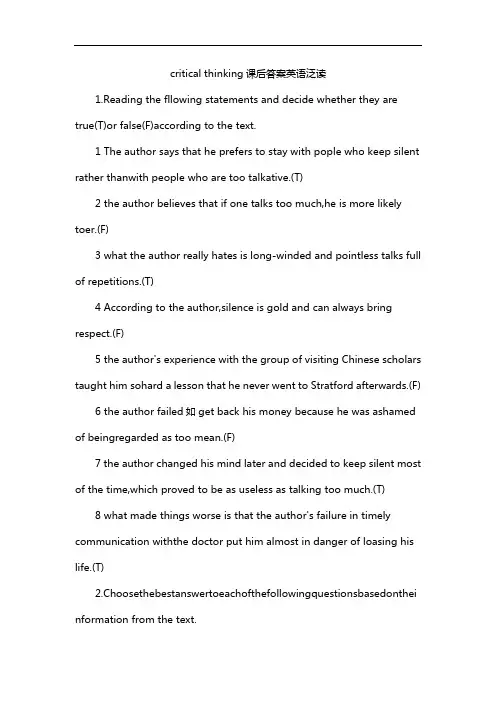
critical thinking课后答案英语泛读1.Reading the fllowing statements and decide whether they are true(T)or false(F)according to the text.1 The author says that he prefers to stay with pople who keep silent rather thanwith people who are too talkative.(T)2 the author believes that if one talks too much,he is more likely toer.(F)3 what the author really hates is long-winded and pointless talks full of repetitions.(T)4 According to the author,silence is gold and can always bring respect.(F)5 the author's experience with the group of visiting Chinese scholars taught him sohard a lesson that he never went to Stratford afterwards.(F)6 the author failed如get back his money because he was ashamed of beingregarded as too mean.(F)7 the author changed his mind later and decided to keep silent most of the time,which proved to be as useless as talking too much.(T)8 what made things worse is that the author's failure in timely communication withthe doctor put him almost in danger of loasing his life.(T)2.Choosethebestanswertoeachofthefollowingquestionsbasedonthei nformation from the text.1 we learn from thetextthattheauthordoesn'tlikepeoplewhotalktoomuchsimply because.A he is to impatient personB he believes that silence is goldC he hates a long-winded speakerD he is too busy to mix with gasbags2 TheauthorlearnedfromhisbitterexperienceasaguideforagroupofvisitingC hinese scholars that_A__.A one has to make use of speech and silence alternatelyB silence may sometimes lead to misunderstandingc talking too much may land one in troubleD money is a serious master that allows no negligence3 By saying that trip to Stratford“was certainly the most miserable one",the authormeans that_D_.A he didn't gain anythingB he resented the head visitor for his abruptnessC he couldn't satisfy the visitorsD he felt he was helplessly stupid4 The author liked the nurse better than the doctor in that_C__A she took good care of himB she spoke less authoritativelyc she was more frank than the doctor D she saved him at the critical moment。
Critical ReadingCritical reading applies to non-fiction writing with which the author puts forth a position or seeks to make a statement.Critical reading is active reading.It involves more than just understanding what an author is saying.Critical reading involves questioning and evaluating what the author is saying,and forming your own opinions about what the author is saying. Here are the things you should do to be a critical reader.Consider the context of what is written.You may be reading something that was written by an author from a different cultural context than yours.Or,you may be reading something written some time ago in a different time context than yours.In either case,you must recognize and take into account any differences between your values and attitudes and those represented by the author.Question assertions made by the author.Don’t accept what is written at face value. Before accepting what is written,be certain that the author provides sufficient support for any assertions made.Look for facts,examples,and statistics that provide support.Also,look to see if the author has integrated the work of authorities.Compare what is written with other written work on the subject.Look to see that what is written is consistent with what others have written about the subject.If there are inconsistencies,carefully evaluate the support the author provides for the inconsistencies.Analyze assumptions made by the author.Assumptions are whatever the author must believe is true in order to make assertions.In many cases,the author’s assumptions are not directly stated.This means you must read carefully in order to identify any assumptions. Once you identify an assumption,you must decide whether or not the assumption is valid.Evaluate the sources the author uses.In doing this,be certain that the sources are credible.For example,Einstein*is a credible source if the author is writing about landmark achievements in physics.Also be certain that the sources are relevant.Einstein is not a relevant source when the subject is poetry.Finally,if the author is writing about a subject in its current state,be sure that the sources are current.For example,studies done by Einstein in the early20th century may not be appropriate if the writer is discussing the current state of knowledge in physics.Identify that possible author bias.A written discussion of American politics will likely look considerably different depending on whether the writer is a Democrat*or a Republican*. What is written may very well reflect a biased position.You need to take this possible bias into account when reading what the author has written.That is,take what is written with“a grain of salt.”By being a critical reader,you will become better informed and may change your views as appropriate.。
Unit 10 The Credibility Principle2.Mastery of some language points3. Realizing the importance of the credibility principle and carry it through4. Knowing how to read advertisements2. Mastery of some difficult language points3. Learning the importance of the credibility principleⅢ Difficult points1. Saying is easier than doing. Action speaks louder than words. Can studentsfollow the credibility principle all the time?2. Students might have difficulty in some of the words and phrases3.English advertisements are a little difficult for them to readAbout one and a half periods of class will be used for the analysis and discussion of the passage itself.Total class hours: two periods1. Title:⏹credibility - the quality, capability, or power to elicit belief 可信性,使人信任的本质、能力或力量⏹credibility gap 信用差距(指政府官员等言论与事实的不符)⏹lack of credibility in 不可信, 缺乏凭证2, Related InformationAbout “Honesty and Credibility”The goods sold by a successful corporation are not only the products themselves, but also the invisible business culture. For a corporation, to get success for a short time, it merely depends on the good quality of the products; to succeed for a medium period, the marketing strategy is indispensable; with a better managing program, it will prolong its life. But if the corporation wants to live everlasting, it must establish a sound business culture as its root. Although each corporation differs in business culture, fundamental to this is ―Honesty&Credibility‖. In another word, ―Honesty&Credibility‖ is the core of e ach business culture.The Chinese ―3.15‖—Consumers‘ Day propagates: honesty and credibility which has long been the soul of east civilization. The thought of ―Honesty&Credibility‖ is oflong standing. China is a civilized ancient East Asian country. Its dominant morality emphasizes ―Honesty&Credibility‖, the honesty between men and men, corporation and corporation, corporation and customer; between government and people, government and government. If one lost ―Honesty&Credibility‖, one would lose relatives and friendship, even result in conflicts and hatred, or moreover, the war.Market economy of its essence is not only a fair competitive economy, but also a legal economy, even a credit economy. So when credit crisis of market economy hampers the development of our economy, especially after we entered WTO that we have to compete in the international market, improving market credit construction becomes an important task that we‘re facing.What Is “Honest y & Credibility” in BusinessAs a type of business culture, honesty means sincerity. Credibility comes form honesty and reliability. Honesty and credibility mean that you should realize your commitment and your promise. What you said should in accordance with how you acted.Why is there no credibility?The Weakness of SystemThe Stimulation of ProfitsThe Lacking of Moral EducationThe Loose of Supervision and MonitoringTo sum up, business culture is an indispensable core and soul of an enterprise. Though business culture differs from each corporation, ―Honesty&Credibility‖ is the fundamental one which cannot be ignored. Since ―Honesty & Credibility‖ plays an important role in contemporary world and is inevitable for doing business, every businessman should obey it. However in our country, it‘s rather weak in this aspect compared with other developed countries in the world, we still have a lot work to do. Faced with the existing predicament where dishonest companies, people and behaviors are in abundance, which badly influenced the development of our country. We cannot just owe it to the immature of the system; on the other hand, we should enhance our awareness of the importance of ―Honesty&Credibility‖ and try to explore some efficient ways to improve it. Furthermore, an honest and credible business atmosphere will improve the economic system in turn. Therefore, this dissertation is recommended to do our best to build up a sound credit system, such as in some developed countries where they have personal or enterprise business credit system. We also should create a credible environment to decrease the immoral behaviors and dishonest organizations and improve moral education in order to facilitate the flows of funds, and to increase the transparency of the flows of funds among the nations and markets, thus keeping a stable economic development and allowing the achievements of investment and international trade to benefit all nations as well as individuals.3.Text analysisPart I (Para. 1) – Introduction: putting forward the question: what is credibility principlePart II (Para. 2- 13) –Body: analyzing the question: why can‘t a majority of people follow the credibility principlePart III (last para.) –Conclusion: following the credibility principle you‘ll have a successful careernguage Points1. promise – (1) a declaration assuring that one will or will not do something; a vow 发誓,保证某人将做某事或将不会做某事的宣告;誓言(2) something promised 诺言,被承诺的事情break [go back] one‗s [a] promise 违背诺言, 违约make [give] a promise 答应, 许诺Promise is (a due) debt. [谚]欠债要清, 许愿要还。
2018浙江高考英语作文范文Chapter 1: IntroductionThe Zhejiang College Entrance Examination (commonly known as the "高考") is an important milestone in the educational career of Chinese high school students. In 2018, the English section of the Zhejiang College Entrance Examination posed a significant challenge to students. This paper aims to provide an analysis and evaluation of the essay section of the 2018 Zhejiang College Entrance Examination, focusing on the difficulty level, the topics, and the overall performance of the students.Chapter 2: Difficulty LevelThe difficulty level of the English essay section in the 2018 Zhejiang College Entrance Examination was higher compared to previous years. The topics were complex and required students to think critically and express themselves effectively. The essay questions focused on social issues, current events, and personal experiences. For instance, one topic required students to discuss the impact of social media on teenagers' lives. To answer such questions adequately, students needed to possess a strong command of the English language, as well as analytical and writing skills.Chapter 3: TopicsThe topics selected for the essay section of the 2018 Zhejiang College Entrance Examination were diverse and relevant to students' lives. They ranged from environmental issues to culturalheritage, from technological advancements to personal growth. This allowed students to showcase their knowledge and understanding of various subjects. The topics also encouraged students to think critically and express their opinions, fostering creativity and originality in their writing.Chapter 4: Students' PerformanceOverall, the students' performance in the essay section of the 2018 Zhejiang College Entrance Examination was commendable. Many students exhibited strong language skills and the ability to convey their thoughts clearly and effectively. They demonstrated a high level of coherence and organization in their writing, presenting arguments and supporting them with relevant examples and evidence. However, there were still some areas for improvement. Some students struggled with grammar and vocabulary, leading to occasional errors and lack of clarity in their writing. Additionally, a small number of students faced difficulties in time management, resulting in rushed and incomplete essays.ConclusionIn conclusion, the 2018 Zhejiang College Entrance Examination English essay section presented a challenging yet stimulating opportunity for students to showcase their language skills and critical thinking abilities. The difficulty level of the questions reflected the need for students to possess a strong command of the English language and the capacity to express their thoughts effectively. The topics selected were broad, diverse and relevant, offering students an opportunity to engage with subjects that areimportant in today's world. The overall performance of the students was impressive, although there were areas that require attention and improvement. The English essay section of the 2018 Zhejiang College Entrance Examination served as a platform for students to demonstrate their academic prowess and preparedness for future academic endeavors.Chapter 5: Implications for English EducationThe difficulty level and topic selection of the English essay section in the 2018 Zhejiang College Entrance Examination have important implications for English education in China. The challenging nature of the questions suggests that English language proficiency should be a priority in classrooms. Teachers should focus on developing students' vocabulary, grammar, and writing skills to enable them to effectively express their thoughts and ideas.Furthermore, the diverse and relevant topics of the essay section highlight the need for a well-rounded English curriculum. English education should not only focus on language proficiency but also on developing students' critical thinking skills and their ability to engage with real-world issues. Teachers should incorporate current events, social issues, and personal growth topics in their lessons to encourage students to think critically and express their opinions in English.Chapter 6: Recommendations for StudentsBased on the analysis of the 2018 Zhejiang College Entrance Examination, there are several recommendations for students to improve their performance in the essay section.Firstly, students should strive to improve their language proficiency. This includes expanding their vocabulary, improving grammar usage, and practicing writing regularly. Engaging in reading English materials, both fiction and non-fiction, can greatly enhance language skills and expose students to different writing styles and techniques.Secondly, students should develop their critical thinking and analytical skills. This can be done by actively participating in class discussions, debates, and engaging with current events and social issues outside of the classroom. Being able to think critically and express coherent arguments is essential for writing strong essays. Lastly, students should work on time management skills. The essay section in the Zhejiang College Entrance Examination is time-constrained, and students need to be able to allocate their time wisely to complete their essays. Practice writing within time limits and develop a clear outline before starting to write to ensure awell-structured and organized essay.Chapter 7: Conclusion and Future DirectionsIn conclusion, the 2018 Zhejiang College Entrance Examination English essay section posed a significant challenge to students but also showcased their language proficiency, critical thinking skills, and ability to express themselves effectively. The difficulty level and topic selection of the essay section have important implications for English education in China, highlighting the need for a well-rounded English curriculum that focuses on languageskills, critical thinking, and engagement with real-world issues. Students can improve their performance by enhancing their language proficiency, developing critical thinking skills, and practicing time management. By addressing these areas, students will be better prepared for future academic endeavors and be able to meet the challenges of the evolving global society. English education in China should continue to evolve and adapt to equip students with the necessary skills for success in their academic and professional lives.。
Unit 10 Student Motivation To Learn.学生学习动机Motivation is an internal state or condition (sometimes described as a need, desire, or want ) that serves to activate or energize behavior and give it direction . Student motivation has to do with students’ des ire to participate in the learning process. What factors influence the development of students’ motivation? How can motivation to learn be fostered? The article gives the explanations.动机是一种激励或者刺激人们行为并指引行为方向的内部状态或状况(有时也是一种需要,渴望,或者意愿)。
学生的学习动机必须和他们参与学习过程的意愿联系在一起。
哪些因素会影响学生学习动机的养成呢?怎样才能培养学习动机呢?这篇文章给出了详细的说明。
Infants and young children appear to be propelled by curiosity, driven by an intense need to explore, interact with, and make sense of their environment. As one author puts it, "Rarely does one hear parents complain that their pre-schooler is 'unmotivated' " (James Raffini 1993).不管是婴儿还是小孩,他们看起来都会受好奇心的推动,受探索自然,融入并探索自然的强烈需要的驱使。